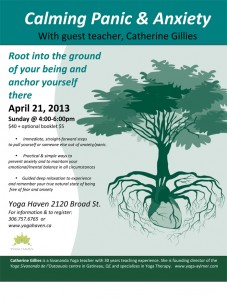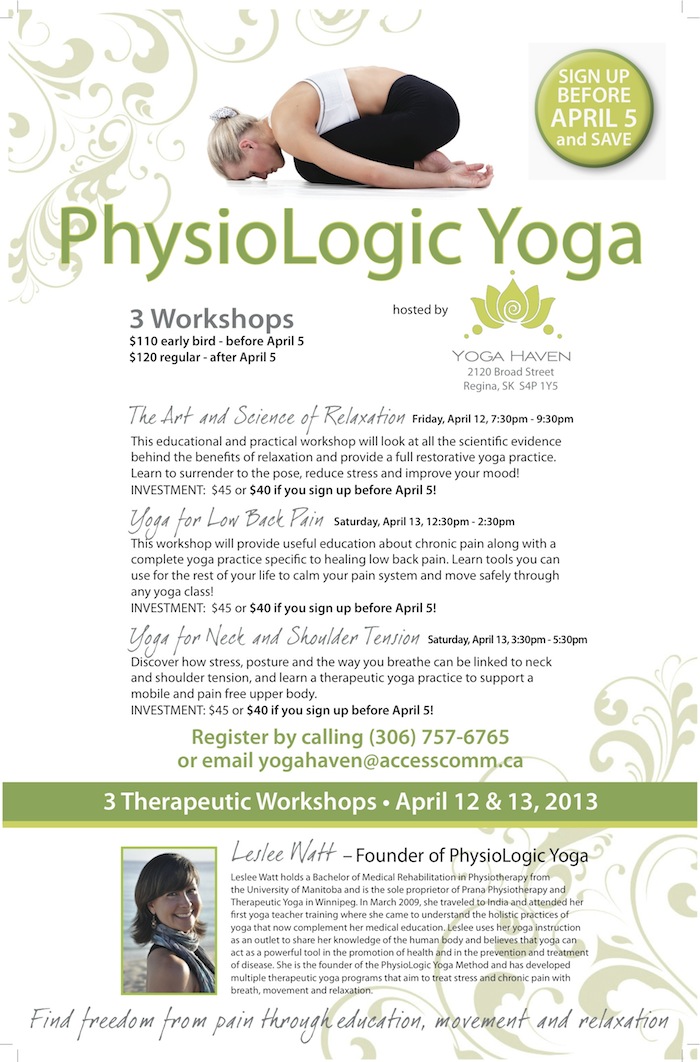 This July I have taken some time off teaching to practice, read, study, putter, play and rest. It has been a great opportunity to step back and see the larger picture of why we practice yoga. If we are not practicing yoga to be nicer, more helpful, and more aware of our actions, what is the point? Yes, we get more oxygen to our cells and some great physical benefits of strength and flexibility and to be honest, this is the main reason I started to practice yoga, but it is time to chat about the bigger picture.
This July I have taken some time off teaching to practice, read, study, putter, play and rest. It has been a great opportunity to step back and see the larger picture of why we practice yoga. If we are not practicing yoga to be nicer, more helpful, and more aware of our actions, what is the point? Yes, we get more oxygen to our cells and some great physical benefits of strength and flexibility and to be honest, this is the main reason I started to practice yoga, but it is time to chat about the bigger picture.
I have been reading the Yoga Sutras of Patanjali interpreted by Mukunda Stiles this summer. Yes, I am a yoga geek and I like to talk , read, breath, and do yoga a lot. (My poor friends and family) This interpretation has been one of my favorites. Patanjali has offered helpful definitions to the 8 limbs of yoga. These are Yamas (moral retraint), Niyamas (discipline), Asana (postures), Pranayama (breath regulation), Pratyahara (sense withdrawl), Dharana (concentration), Dhyana (meditation), and Samadhi. (being absorbed in spirit) I want to focus on the yamas today and will continue in future blogs to discuss the other 7 limbs. This is your place to learn about the deeper aspects of yoga.
The first yama is ahimsa (non-injury or non-violence) and is a major aspect of a yogic lifestyle. Ahimsa is non-injury to yourself or others. Think of non-violence in thought, deed and action. This includes the car folks. (The comedian Louis CK has a good rant about this)The second is satya (truthfulness) and considers not only being true in what you say (in a non-violent way of course) but also in following your truth or purpose in this life. Are you living your truth? The third yama is Asteya (non-stealing) which speaks for itself but have you considered if you are not living your truth, you are stealing your own time? Next, bramacarya (chastity) or right use of sexual energy. Consider how you are using your energy. Lastly, aparigraha (greedlessness) is about sharing your talents, food, love, energy, and time wisely. Some may consider not sharing your special talent with the world to be greedy. What do you need to share?
Here are some sutras from chapter 2 of the Sadhana Pada from The Yoga Sutras of Patanjali ; Sutra 28; “By sustained practice of all the parts of yoga, the impurities dwindle away and the wisdom’s radiant light shines forth with discriminative knowledge.” Sutra 29; “Yoga’s eight component parts are self control for social harmony, precepts for personal discipline, yoga pose, regulation of prana, withdrawal of the senses from their objects, contemplation of our true nature, meditation on the True Self, and being absorbed in Spirit. ” Sutra 30; “Self control consists of five principles: non-violence, truthfulness, freedom from stealing, behavior that respects the Divine as omnipresent, and freedom from greed.” Sutra 31; “These are called the great universal vows when they are extended unconditionally to nurture everyone, regardless of status, place, time, or circumstance.”
These practices or disciplines are part of the yogi’s guidelines and a huge part of an authentic practice. We do slip, we do fall, we have our moments of hypocrisy but the yamas help us find our way back to living a life of harmony with ourselves and others. Whether you are discussing a touchy topic with a friend, opening a business, writing blogs, or raising children (fur babies count) we can use the yamas as a way to approach these interactions in our most authentic, mindful way.
 “Do or do not do, there is no try.” – Yoda
“Do or do not do, there is no try.” – Yoda
Stay tuned here for more inspiring yoga philosophy at www.yogahaven.ca and Yoga Haven at 2120 Broad Street in Regina, Sk.
Lori
p.s I miss you all and will be back teaching in August. XO
 We are offering free yoga on Wednesday , August 28th. We are celebrating our fall schedule with free yoga and an open house from 5-7pm.
We are offering free yoga on Wednesday , August 28th. We are celebrating our fall schedule with free yoga and an open house from 5-7pm.









 We are so excited to announce another Urban Retreat. I love the idea of staying in the city while enjoying delicious company, yoga, live music, and food. This is a chance to get away for a few hours without the hassle of packing bags, driving, and making plans for caring for the household while you are away. We are excited to have Christina and Kristy join us again for some epic music and yoga groovin. I will be providing some raw vegan tasty treats to satisfy your palate and my love for creating delicious and nutritious raw food. Nicole will lead us through a pranayama breathing practice to tap into the power of our breath. Then finally, a yoga nidra for waking up the senses while relaxing the body and soul. We would be thrilled to have you join us for this Urban Retreat!
We are so excited to announce another Urban Retreat. I love the idea of staying in the city while enjoying delicious company, yoga, live music, and food. This is a chance to get away for a few hours without the hassle of packing bags, driving, and making plans for caring for the household while you are away. We are excited to have Christina and Kristy join us again for some epic music and yoga groovin. I will be providing some raw vegan tasty treats to satisfy your palate and my love for creating delicious and nutritious raw food. Nicole will lead us through a pranayama breathing practice to tap into the power of our breath. Then finally, a yoga nidra for waking up the senses while relaxing the body and soul. We would be thrilled to have you join us for this Urban Retreat!
